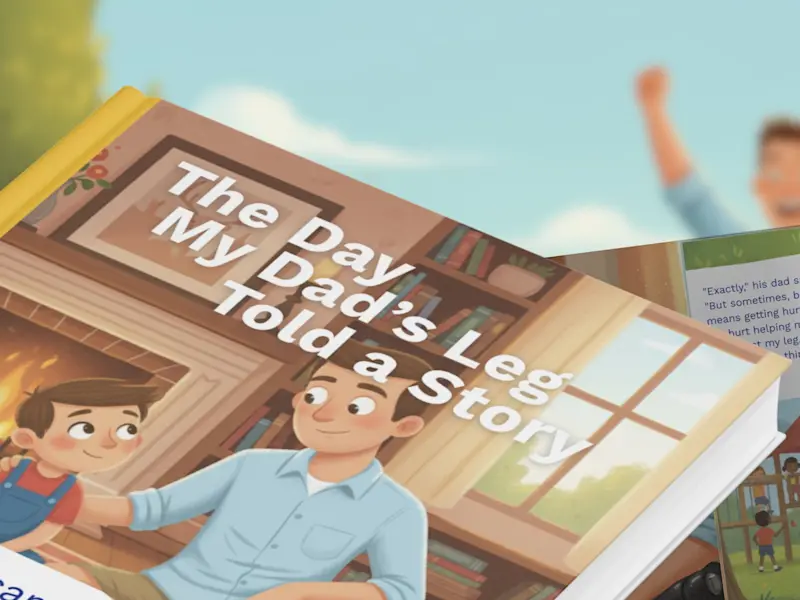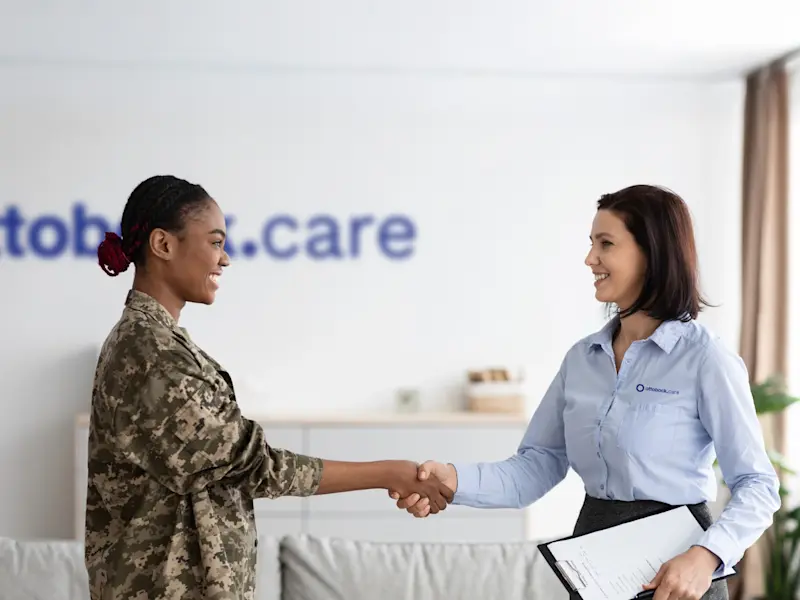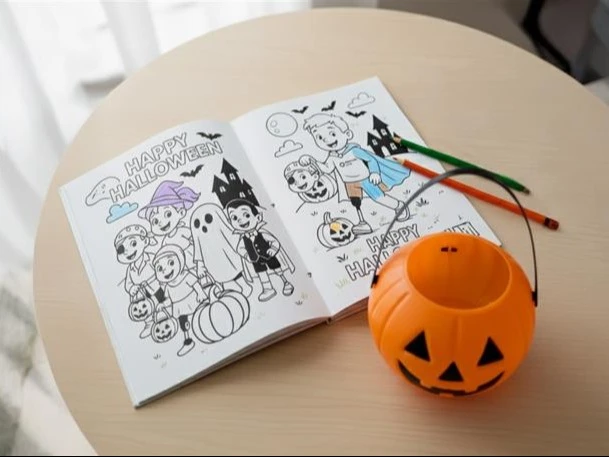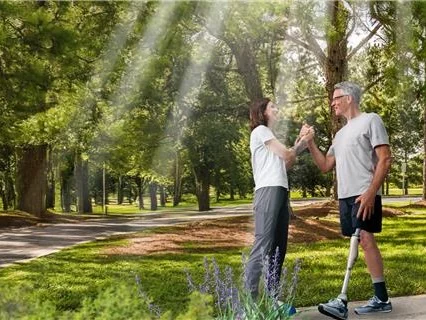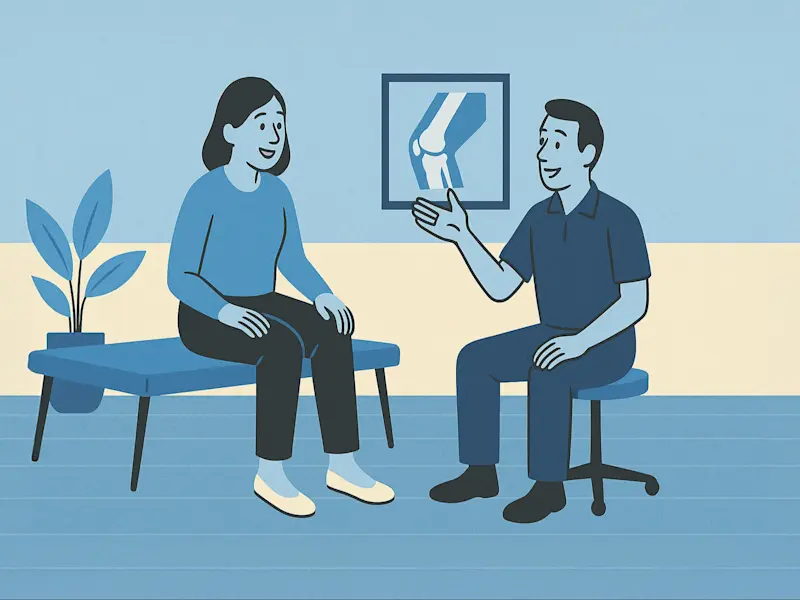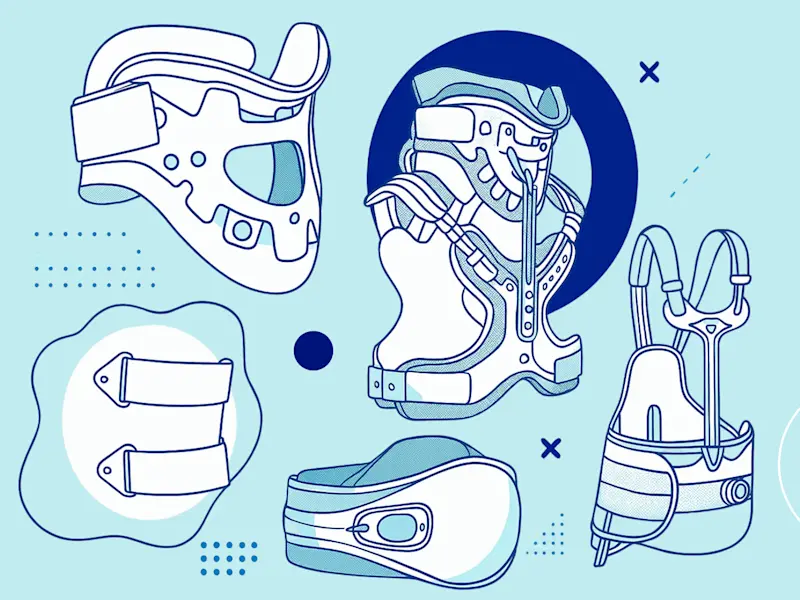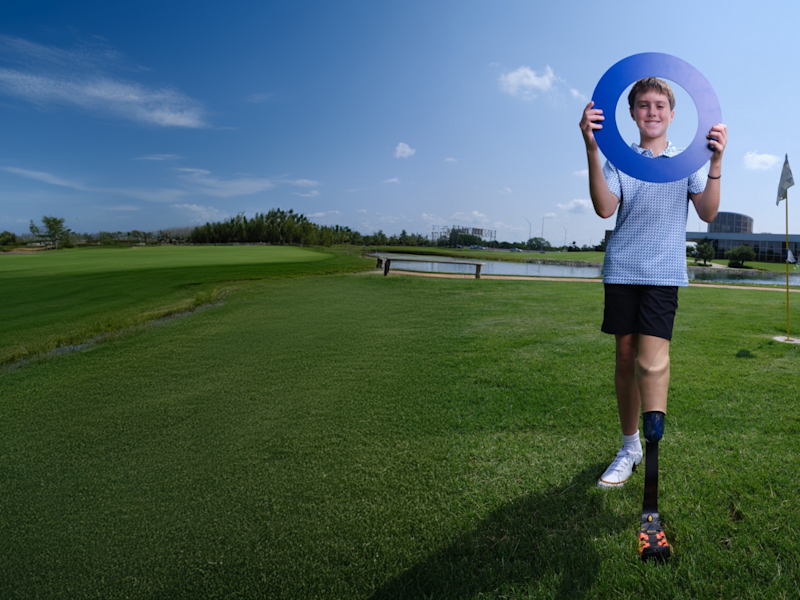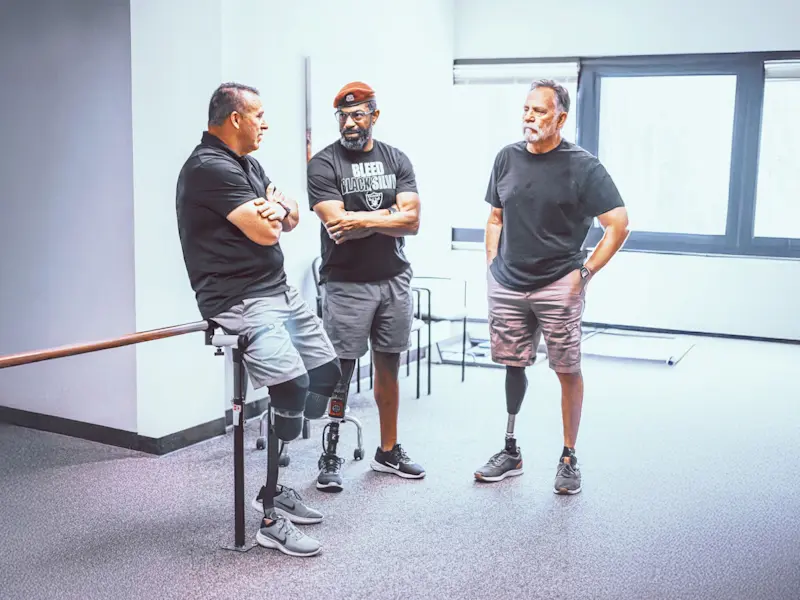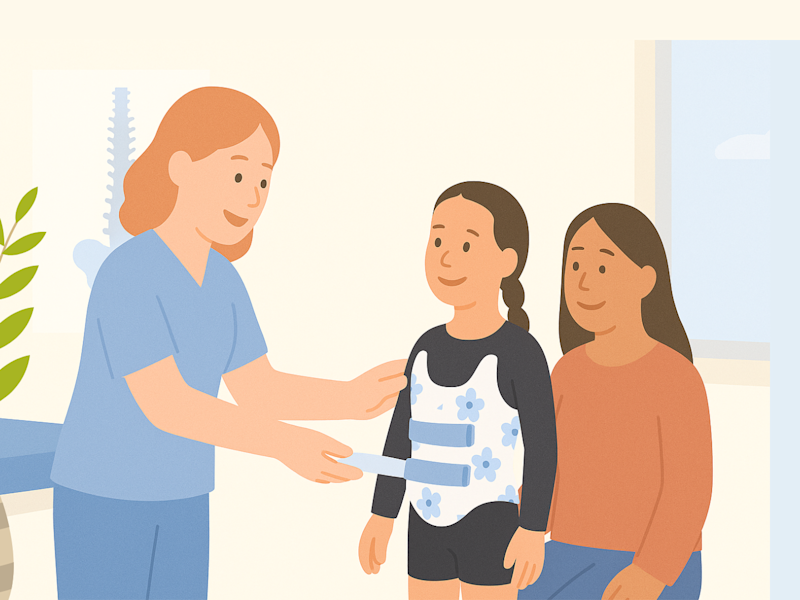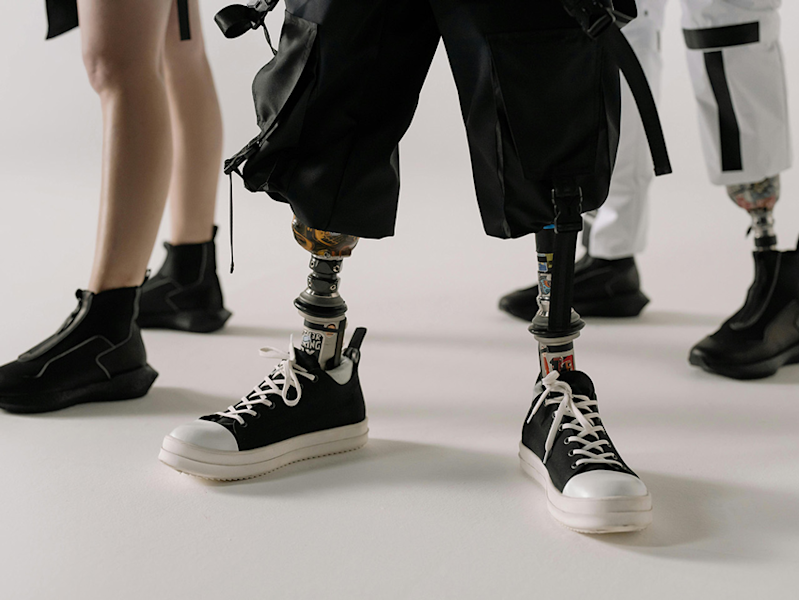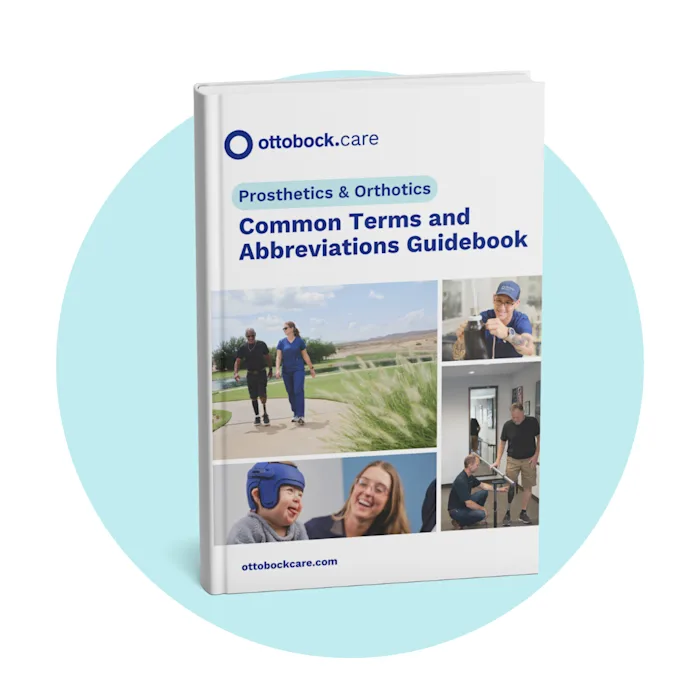
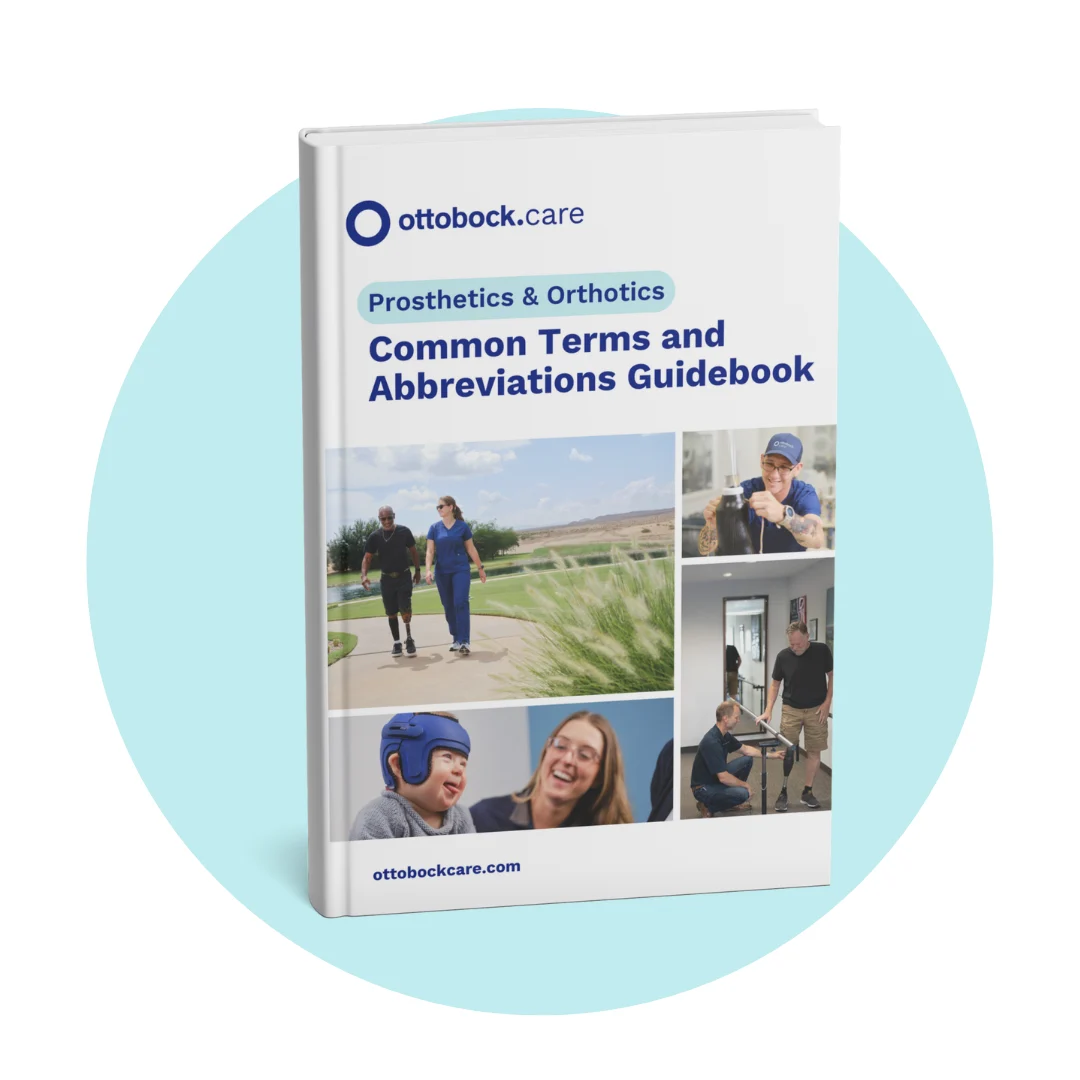
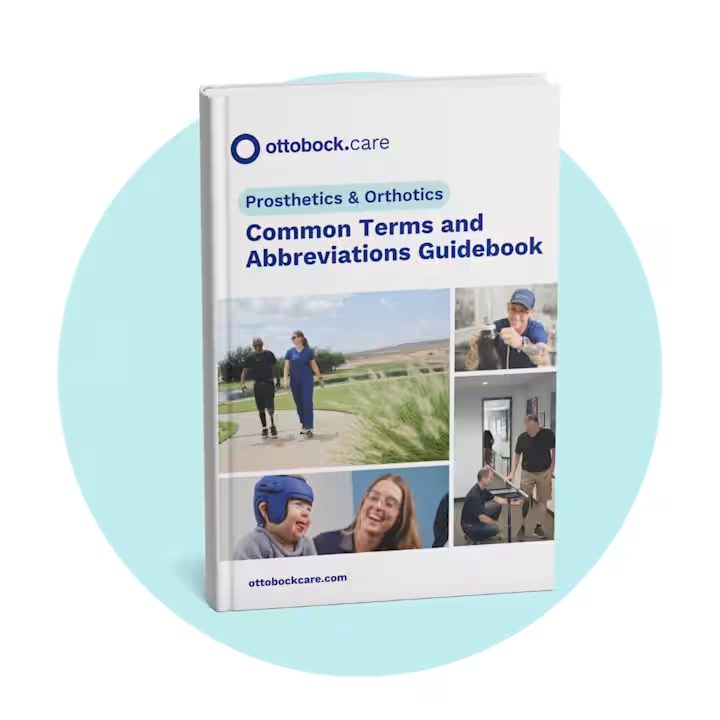
Common Terms & Abbreviations in O&P
Download our informative guide to discover the terms that embody our commitment to care.
Download our informative guide to discover the terms that embody our commitment to care.
Term | Definition / Description |
|---|---|
Abduction | A movement of your limb away from the middle of the body |
Adduction | A movement of your limb towards the middle of your body |
Alignment | The position / orientation of prosthetic componentry, like the socket and prosthetic device, and how it aligns with other prosthetic units as well as the human anatomy |
Anterior | Towards the front of the body |
Bilateral | Referring to both sides of the body |
Biomechanics | The science of movement of a body, including how muscles, bones, tendons, and ligaments work to produce movement |
Cervical | Referring to the area of the neck; 7 cervical vertebrae make up the cervical spine |
Check Socket | A temporary socket made of transparent plastic that is used by the prosthetist to diagnose the fit of the socket; think of it as a clear version of the cast taken. Also called a Diagnostic Test Socket, or DTS |
Circumduction | The circular motion of a limb that is created when the movements of flexion, extension, abduction, and adduction are sequentially performed |
Contracture | Tightening of the muscles, tendons, or ligaments that prevents normal movement of a joint; these can occur from trauma or sitting still for too long. This should be prevented at all times |
Coronal plane | Imaginary plane that divides the body into front and back halves |
Cosmesis | The outer covering of a prosthesis serving the purpose of aesthetics; sometimes referred to as cosmetics |
Definitive Prosthesis | A replacement for a missing limb after post-surgical swelling has subsided; likely the second prosthesis you will receive after your amputation. The device that is delivered after the year-long period of change your limb goes through post-amputation |
Disarticulation | Amputation through a joint (i.e. ankle, knee, hip) |
Distal | A reference point that is towards the end of your limb, away from your body (i.e. closer to the end of your limb than your knee for a transtibial amputee) |
Donning / Doffing | The process of putting on (donning) and taking off (doffing) a prosthesis |
Dorsal Surface | Describes the area on top of the foot and the back of the hand |
Dorsiflexion | Pointing the toe or foot upwards |
Edema | Swelling of the tissues; occurs with poor circulation, certain medications, and when your limb is hanging down |
Eversion | The movement of the plantar surface, or sole, of the foot so that it faces away from the midline of the body |
Extension | Increase in joint angle, straightening the knee, pulling your thigh behind your body |
External Rotation | The rotation of a body part away from the midline of the body |
Flexion | Decrease in joint angle, bending the knee, pulling your thigh towards your chest |
Gait | How you walk; the pattern of movement in your limbs |
Gait Training | Learning, usually from a physical therapist, how to walk safely and properly with a prosthesis |
Internal Rotation | The rotation of a body part toward the midline, of the body. Palmar (Volar) Surface: Describes the area on the palm of the hand |
Inversion | The movement of the plantar surface, or sole, of the foot so that it faces toward the midline of the body |
Lateral | Away from the midline of the body to the outside |
Liner(s) | A covering for the residual limb that is used for suspension, cushioning and protection, it goes on your limb and inside the socket |
Lumbar | Referring to the area of the lower back; five vertebrae (bones) make up the lumbar spine |
Medial | Towards the midline of the body, towards the inside |
Myodesis | A process during an amputation where the muscles are attached to bone |
Myoplasty | A process during an amputation where muscles are attached to opposing muscles |
Neuroma | A nerve ending that is cut during an amputation and turns into a disorganized growth or lump of nerve cells; neuromas (also be identified as “pinched nerve” or “benign tumor of nerve tissue”) are extremely sensitive and can be painful |
Occupational Therapy | Evaluation and training performed by a licensed occupational therapist which focuses on maximizing the activities of daily living |
Phantom Limb Pain | Pain that appears to come from an area below where the amputation occurred, often a sharp, firey, or electrical feeling |
Phantom Limb Sensation | The feeling that an amputated limb is still attached to the body, it may present as an itch in a part of your limb that is no longer there |
Plantar Flexion | Moving the ankle so the toe or foot point downwards |
Plantar Surface | Describes the bottom, or sole, of the foot |
Physical Therapy | Evaluation and training performed by a licensed physical therapist, which focuses on exercise, reducing pain and regaining mobility |
Pronation | Rotation of the forearm so that the palm of the hand faces downward or backward; opposite of supination |
Posterior | Towards the back of the body, behind you |
Prosthesis | An artificial body part |
Prosthetist | Healthcare practitioner who evaluates, fabricates, fits and adjusts prosthetic devices |
Proximal | Used for a reference point that is towards your body along your limb, (i.e. closer to your knee than the end of your limb for a below knee amputee) |
Residual Limb | The portion of a limb that remains after amputation |
Rotation | Circular/turning movement of body parts, like the back, around its long axis |
Sagittal Plane | Imaginary plane that divides the body into left and right halves |
Sound Side Limb | The limb that has not been amputated |
Supination | The rotation of the forearm so that the palm of the hand faces upward or forward; opposite of pronation |
Thoracic | Referring to the area of the mid and upper back; 12 thoracic vertebrae (bones) make up the thoracic spine |
Transfemoral | Amputation that occurs at a level above the knee joint but below the hip joint; also known as “above knee” |
Transtibial | Amputation that occurs at a level below the knee joint but above the ankle joint; also known as “below knee” |
Transverse Plane | Imaginary plane that divides the body into top and bottom halves |
Unilateral | Referring to one side of the body |
Valgus | Bent or turned outward, used in deformities in which the most distal anatomical part is angled outward. Used commonly to describe the knee and elbow |
Varus | Bent or turned inward, used especially of deformities in which the most distal anatomical part is angled inward. Used commonly to describe the knee and elbow |
Abbreviation | Definition |
|---|---|
ADL | Activities of daily living, or activities related to personal care like bathing, showering, dressing, cooking, eating, and more |
AK / AKA | Above Knee Amputation, or an amputation through the femur (thigh) |
AP | Anterior-Posterior, or front to back |
BK / BKA | Below Knee Amputation, or amputation through the tibia (shin) |
“Disartic” | Shortened term for Disarticulation, which is the disconnection of all or part of a limb from the body, specifically through a joint like your knee, hip, elbow, or shoulder |
DTS | Diagnostic Test Socket, also know as a check socket |
HD | Hip disarticulation amputation, or amputation through the hip joint |
KD | Knee disarticulation, or amputation through the knee joint |
ML | Medial-Lateral, or side-to-side |
OT | Occupational therapy/therapist, which is a therapy that focuses on improving a patient’s ability to perform activities of daily living |
PT | Physical therapy/therapist, which is a therapy that focuses on a restoring and strengthening mobility and/or reducing pain |
TF | Transfemoral, a more technical term for above knee amputee (AK / AKA) |
TT | Transtibial, a more technical term for below knee amputee (BK / BKA) |
“Symes” | Ankle disarticulation, or amputation through the ankle bones |
Get a Consultation
Are you ready to take the next step towards improved mobility and comfort? Find an orthotics and prosthetics clinic near you and schedule your appointment today!
